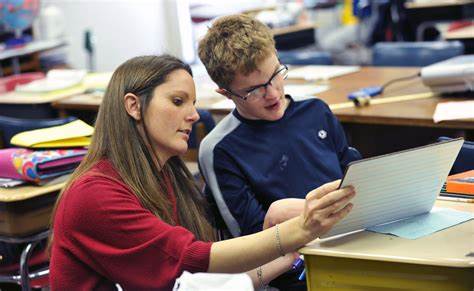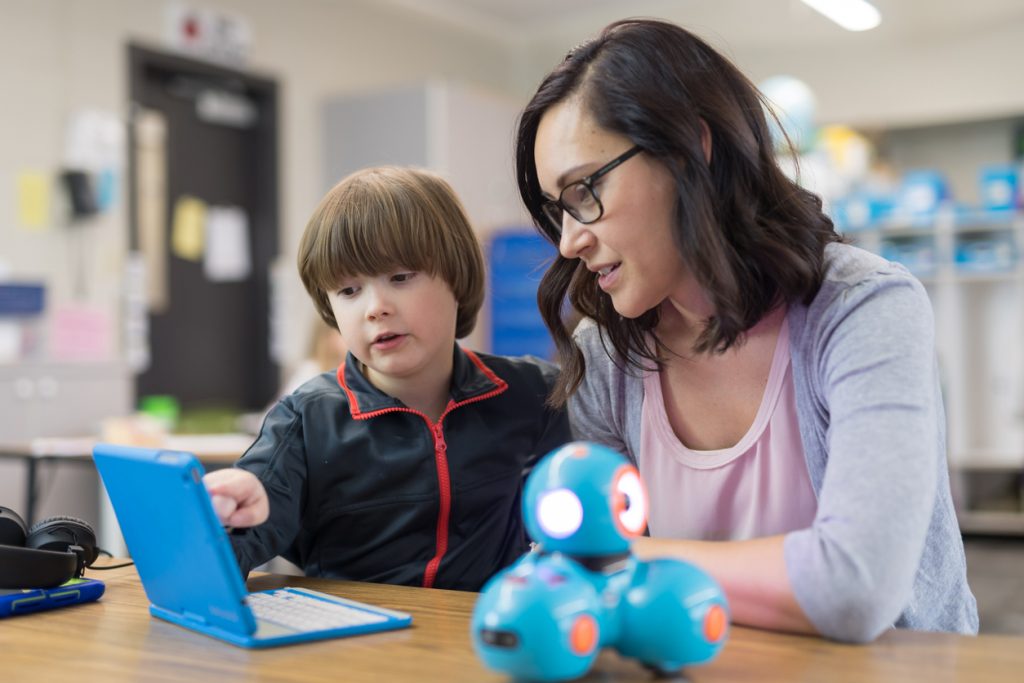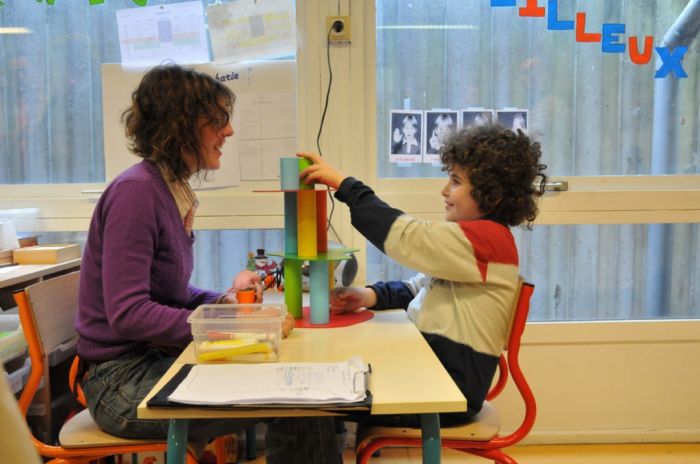Understanding Nonverbal Learners with Autism and Intellectual Disabilities: Dispelling Myths and Embracing Inclusion
By Ivana Vasilevska Petrovska
Nonverbal learners with autism and intellectual disabilities have long been misunderstood and marginalized within our educational systems. However, contemporary understanding, rooted in the social model of disability, human rights, and person-centered approaches, has challenged misconceptions and shed light on the unique strengths and needs of these individuals. In this article, we will debunk common myths surrounding nonverbal learners and explore the current understanding within the framework of the social model of disability, human rights, and person-centered approaches. By dispelling these myths and embracing an inclusive mindset, we can foster a more supportive and empowering learning environment for nonverbal learners.

Myth #1: Nonverbal Means Non-Intelligent
Fact: Nonverbal learners with autism and intellectual disabilities possess diverse strengths and abilities that may not be accurately reflected through traditional forms of communication. The absence of spoken language does not diminish their intelligence or potential. Instead, they may exhibit strengths in visual thinking, problem-solving, creativity, or other areas. Recognizing and valuing these strengths is essential for providing appropriate support and maximizing their educational opportunities.
Myth #2: Nonverbal Learners Lack Understanding
Fact: Nonverbal learners have unique ways of understanding and processing information. Their nonverbal communication, such as gestures, facial expressions, or body language, can convey their comprehension and engagement with the environment. It is crucial to adopt alternative forms of communication, such as augmentative and alternative communication (AAC) systems or visual supports, to bridge any communication gaps and ensure meaningful interactions.
Myth #3: Nonverbal Learners Are Non-Social
Fact: Nonverbal learners are capable of forming social connections and seeking meaningful social interactions. However, their preferred modes of communication may differ from those of verbal individuals. Encouraging inclusive social environments that embrace diverse communication styles can foster connections, friendships, and a sense of belonging for nonverbal learners.

The Social Model of Disability, Human Rights, and Person-Centered Approaches
The social model of disability emphasizes that disabilities are not solely a result of an individual's impairment but are also shaped by societal barriers and attitudes. Applying this model to nonverbal learners entails recognizing that their difficulties in communication are not solely internal but also influenced by the limitations of our educational systems. By removing barriers and providing appropriate supports, we can empower nonverbal learners to fully participate in society and exercise their human rights.
Person-centered approaches highlight the importance of tailoring educational experiences to meet individual needs, preferences, and strengths. For nonverbal learners, this means embracing alternative forms of communication, such as AAC and visual supports, to provide them with a voice and control over their learning. By prioritizing their autonomy, agency, and self-determination, we can create a more inclusive and empowering educational environment.
Implications for Teaching and Learning
Communication Supports: Implementing AAC systems and visual supports enables nonverbal learners to express themselves, engage with educational content, and participate in classroom activities. It is essential to provide a range of communication options and adapt teaching strategies to accommodate their unique communication styles.
Universal Design for Learning (UDL): UDL principles promote flexible instructional approaches that address diverse learner needs. By incorporating multiple means of representation, expression, and engagement, educators can create inclusive learning environments that support nonverbal learners' varied strengths and preferences.
Collaborative Partnerships: Collaboration between educators, families, and professionals is crucial in understanding the individual needs and goals of nonverbal learners. By working together, we can develop comprehensive support plans, share strategies, and ensure consistent communication across home and school settings.

Understanding and embracing the needs of nonverbal learners with autism and intellectual disabilities is crucial for promoting inclusive education and upholding their human rights. By dispelling myths and adopting a person-centered approach, we can create a learning environment that recognizes and values their unique strengths, provides alternative forms of communication, and fosters meaningful social connections.
Utilizing visual supports and AAC systems plays a pivotal role in facilitating communication and access to equal educational opportunities for nonverbal learners. Visual supports, such as visual schedules, social stories, and visual aids, provide a visual representation of information, routines, and expectations, helping to enhance understanding and reduce anxiety. AAC systems, which can range from low-tech options like picture-based communication boards to high-tech solutions like speech-generating devices, empower nonverbal learners to express their thoughts, needs, and desires effectively.
The integration of digital tools within the classroom further amplifies the potential for using visual supports and AAC. With the advancements in technology, there are a wide variety of digital applications and platforms available that cater specifically to nonverbal learners. These tools offer customizable visual supports, interactive communication boards, and voice output capabilities, allowing nonverbal learners to communicate, engage with content, and participate actively in the learning process.
By incorporating visual supports and AAC in digital in-class education, educators can create an inclusive learning environment that promotes independence, autonomy, and self-advocacy. It enables nonverbal learners to have a voice, make choices, and exert control over their educational experiences. Additionally, it fosters a sense of belonging, as these individuals are empowered to actively participate in classroom activities, express their thoughts and opinions, and engage meaningfully with their peers.
As educators and professionals, it is our responsibility to advocate for the rights of nonverbal learners with autism and intellectual disabilities. By recognizing their inherent dignity, promoting inclusive practices, and leveraging digital tools, we can ensure that every learner has access to quality education, communication support, and the opportunity to thrive.
Remember, by embracing visual supports, AAC, and digital tools, we can create an inclusive educational environment where nonverbal learners with autism and intellectual disabilities can thrive, express themselves, and have their voices heard. Let's work together to ensure that every learner has the opportunity to reach their full potential and experience the joy of learning.
